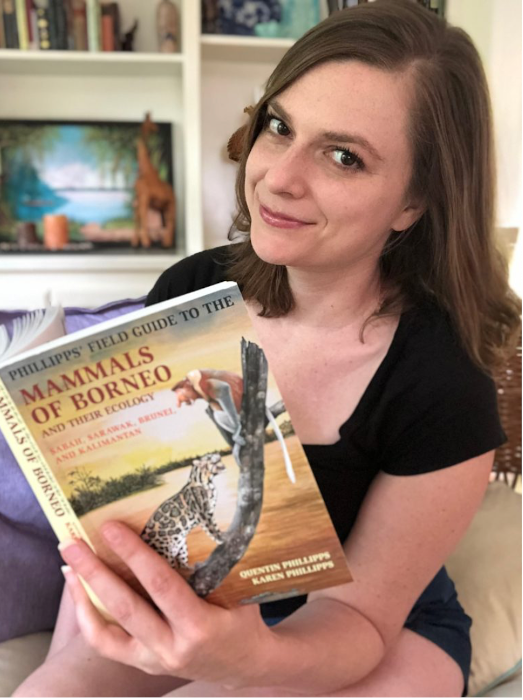*This post contains affiliate links. As an Amazon Associate, I earn from qualifying purchases. This means when you make a purchase, I get a commission at no cost to you! Read more about my affiliates on my Affiliate Links Disclaimer.
Like so many other animals on my trip to Borneo, I NEVER expected to see this little kitty: a leopard cat (Prionailurus bengalensis)! Cats are usually among the most elusive animals, yet we were lucky enough to see one even on the way to Deramakot. Then, in the reserve, we saw them ~8 times!
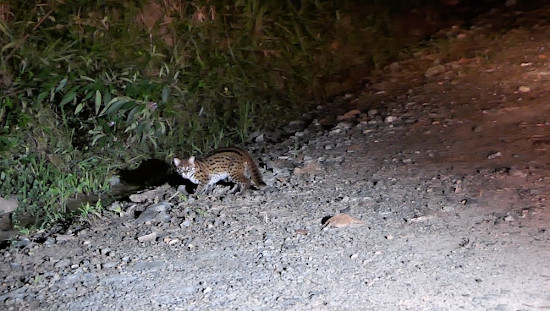
Sometimes, every few hundred meters we would see a leopard cat along the road. It’s like they were evenly spaced out. This is also reported in Phillips and Phillips’ field guide: “On night drives in Tabin a dozen or more individuals can be seen spaced at intervals of a few hundred yards…”
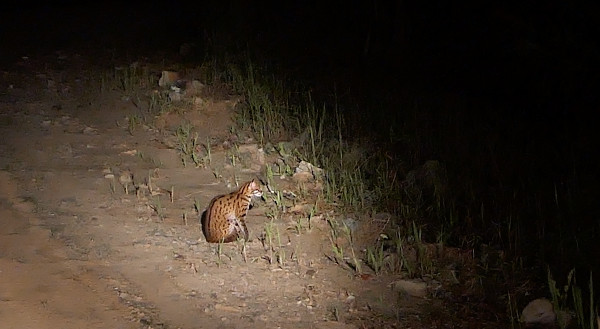
However, on the Animal Diversity Web, they are described as “difficult to observe” and “not known to interact with people, often fleeing when encountered.” I feel so lucky to have seen so many! Ok, let’s learn about this super cute little leopard kitty.
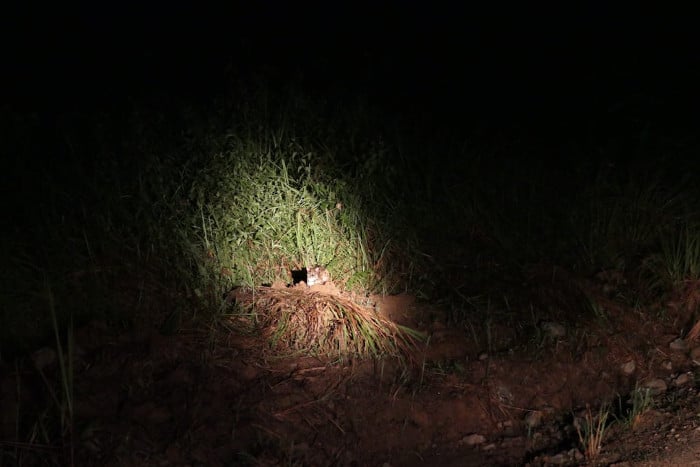
What is a Leopard Cat?
This cat is ridiculously cute. It looked to me a little smaller than a house cat (maybe because I was in the car) with big eyes. Leopard cats weigh 3-7 kg (6.6-15.4 lbs), so most of my cats are actually bigger (or heavier, Natasha is fat!).
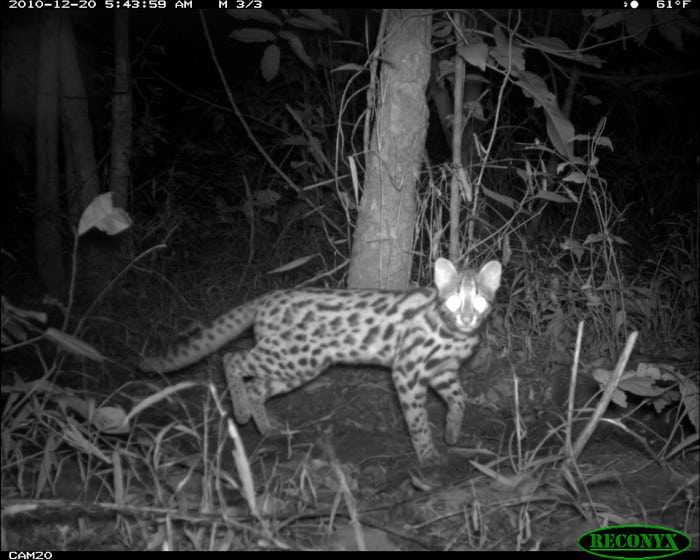
Fun fact: Scientists collected a specimen of conjoined leopard cat twins (“Siamese” twins). This is extremely rare to find in nature!
Where Do They Live?
The leopard cat is the most common wild cat species in Asia and they can adapt to human landscapes. Surprisingly, there’s not a lot of research on this species compared to other wild cats.
This cat actually benefits from logged areas. They are found in higher abundances there, and can even be found inside palm oil plantations (we saw one in a plantation). In fact, one study where leopard cats were tracked using radio telemetry showed that leopard cats preferred to feed in the palm oil plantations. The density of rats was higher in the logged forest nearby, but it was probably easier for them to hunt in open areas of the plantation. They’ve even been proposed by scientists as a means to control rats in palm oil plantations, which could reduce or eliminate the use of rodenticides.
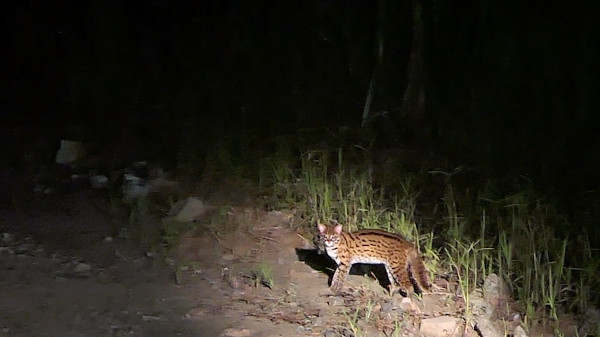
Side note: As I am sure you know, palm oil is definitely not good for wildlife and biodiversity; it basically clear cuts primary forest. That being said, I learned at the conservation biology conference I went to in Malaysia, that avoiding palm oil is not the answer. If we stop buying palm oil, another cash crop will come in that could even be worse for wildlife. It’s better to buy products that are RSPO certified. The Cheyenne Mountain Zoo makes a fantastic app where you can easily check for RSPO-certified products!
What Do They Eat?
You can find this cat in trees, but they mostly hunt on the ground unlike the marbled and leopard cats. They are sit-and-wait predators. One study of their scat (poop) found that they mostly eat different species of rats, but squirrels, birds, and reptiles were also found. The largest prey that they have been recorded to kill is a mousedeer.
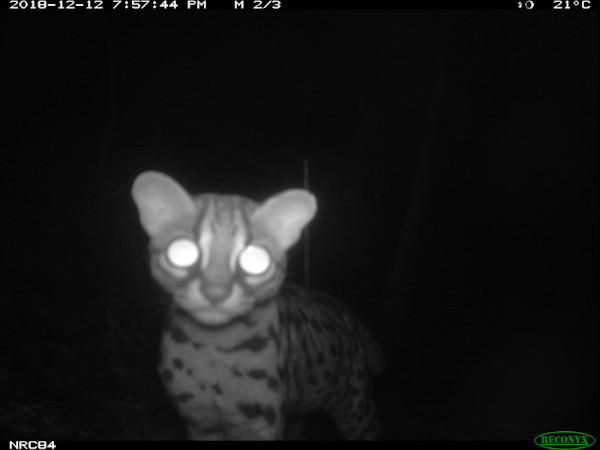
In Borneo, there are no real large predators. The largest is the clouded leopard. They still have to be careful though – in one study of radio-tracked leopard cats, two were eaten by pythons! (poor kitties).
Leopard Cats and Domestic Cats
All modern house cats were domesticated from the wildcat, Felis silvestris lybica. However, a cat domestication event in China ~5,000 years ago was found to originate from a leopard cat. These kitties didn’t make it until today. The bengal cat today though is a breed that originated with leopard cats and domestic cats.
Can you own an Asian leopard cat?
Probably, but that does not mean you should. Owning a wild animal is never a good idea. They do not make good pets because they have not been domesticated alongside humans for thousands of years like dogs and cats. According to the Animal Diversity Web, “they are popular in the pet trade industry, as they are often bred with domestic cats to create bengal cats. Restrictions on their capture and trade are being increased.”
Most bengal cats are bred with each other, but I still don’t think owning a bengal is a good idea, unless it is a rescue. Yes, they are pretty, but with so many cats up for adoption, save a life rather than support a breeder who is making new kitties. I am a crazy cat lady; I have four, but they are all rescues/strays.
Leopard Cat Spots
As you may already know, I love to wear cat prints and love to know which wild cat I am representing. I want to emphasize prints here, and not original furs. Unfortunately, the leopard cat is still hunted for their fur.
Leopard cats have rosettes similar to leopards, but they aren’t always connected (as a full circle) and they are more elongated than leopards.
Like leopards, their coat can vary according to their habitat. More spotted/darker coats will be found in more heavily forested habitats.
Leopard cats look a lot like domestic cats, but rarely to domestic cats have the beautiful spotted patterns that leopard cats do. I’ve looked at thousands of camera trap photos all over the world and I’ve never seen a domestic cat photographed on the traps that look like a leopard cat. One man, however, made this mistake and unfortunately separated a wild leopard cat kitten from its mom.
Leopard cats were just one of the cool animals I saw on my trip to Deramakot. Check out the other mammals here.
This post was also written with the help of the IUCN Red List, and Phillips and Phillips’ Mammals of Borneo. If you go to Borneo, this book is a MUST! And I hope you see a leopard cat!
Love this post? Share it with friends!


